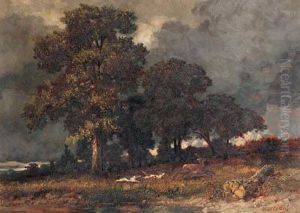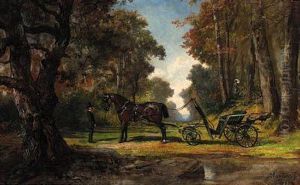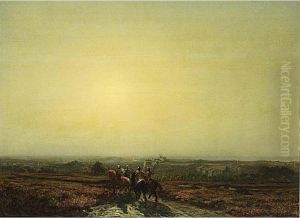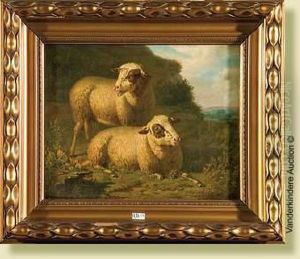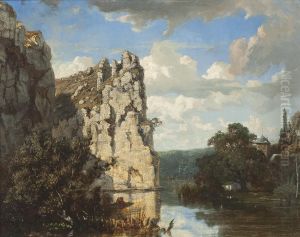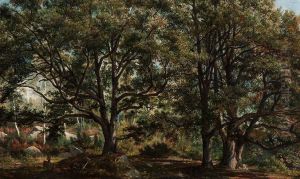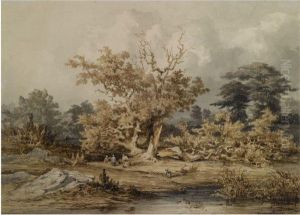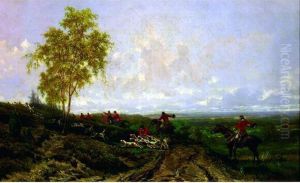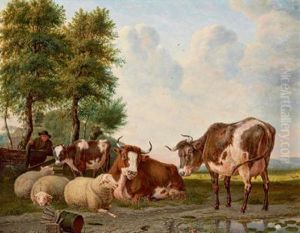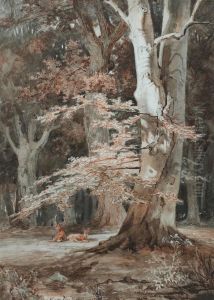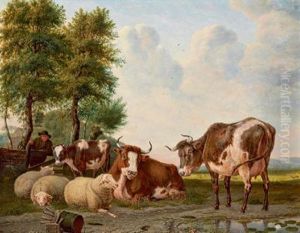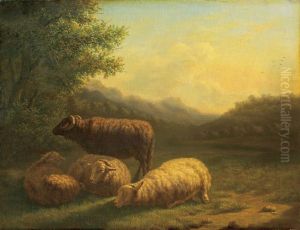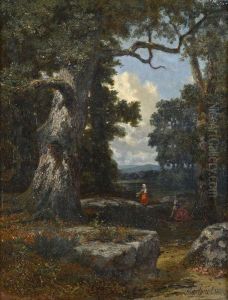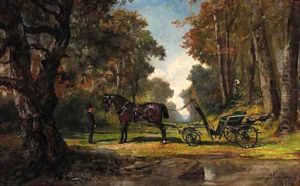Martinus Antonius Kuytenbrouwer Paintings
Martinus Antonius Kuytenbrouwer Jr., born in 1821 in Utrecht, Netherlands, was a Dutch painter known for his detailed landscapes and animal scenes. His father, Martinus Antonius Kuytenbrouwer Sr., was also a reputable artist, which provided a nurturing environment for his artistic development from an early age.
Kuytenbrouwer Jr. pursued his passion for art by studying under his father's guidance, as well as possibly attending formal art classes, a common practice of the time. Throughout his career, he was particularly fascinated with the portrayal of rural life, focusing on scenes that depicted the serene and bucolic landscapes of the Netherlands. His works are characterized by their meticulous attention to detail, vibrant portrayal of natural light, and the lively depiction of animals, especially horses, which were a frequent subject in his paintings.
In the mid-19th century, Kuytenbrouwer Jr. became part of the Romantic movement in art, which emphasized emotion and individualism as well as glorification of the past and nature. His paintings often reflect these themes, capturing the tranquil and untouched aspects of the Dutch countryside. Despite the Romantic influence, his work also shows a commitment to realism, particularly in the accurate depiction of animals and landscapes.
Throughout his life, Kuytenbrouwer Jr. exhibited his work in various art shows and gained a modest level of recognition among art collectors and patrons. However, like many artists of his time, he struggled with financial instability and the challenges of making a living through art alone.
Martinus Antonius Kuytenbrouwer Jr. passed away in 1897, leaving behind a legacy of captivating landscapes and animal paintings. Although not as widely known today as some of his contemporaries, his work continues to be appreciated by art historians and collectors for its contribution to Dutch landscape and animal painting in the 19th century.
